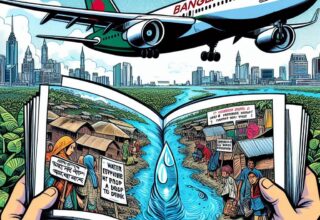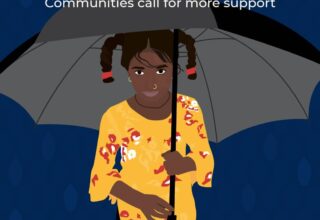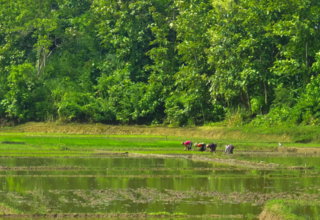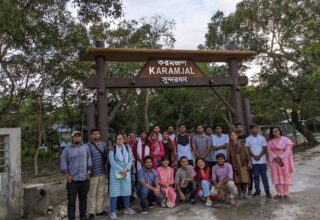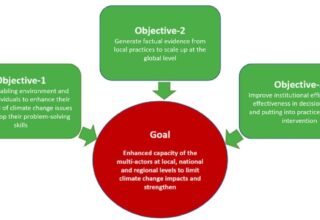
Dr Saleemul Huq, director of International Centre for Climate Change and Development (ICCCAD) and one of the World’s 100 Most Influential People in Climate Policy for 2019, speaks with DhakaTribune's Mehedi Al Amin about Bangladesh’s priorities in the upcoming COP25. This is the first of a three-part series
What will the negotiation be like this year at the COP25?
Under the convention framework, COP [Conference of the Parties] is not a place for a single country to negotiate. Every other country, including China, is part of a group. China is the part of G77. Bangladesh is a part of least developed countries (LDC) group of 47 nations.
In the last two years, we managed to get three other vulnerable countries’ groups – small island states, Africa and Latin America.
In these four groups, there are more than 100 countries.
If the four groups come together, India, Brazil, China and all the big G77 countries will support us. And once we get G77 including China to support us, we can go for a big fight with the rich countries in the negotiations. That is our strategy.
What are important issues for us?
The biggest and most important element for us as a vulnerable country is to talk about the issues of Loss and Damage, which is an agenda at the COP25. There is a review of theWarsaw International Mechanism on Loss and Damage, which was created at COP19. It had a five-year work plan which is coming to an end. So there are two decisions to be made. One is whether we should continue it or not. Everybody will probably agree to continue. Second, if we do decide to continue, should we change the mandate or activities?
We are going to push hard for some additional mandates, particularly for the finance of Loss and Damage. In the past, we had the little bit of that; it was called “Innovative Finance for Loss and Damage.” But the only thing that the developed countries talked about was insurance and nothing more. This time, we are going to push for innovative finance beyond insurance. But we have to stay united; we have to fight hard.
For insurance, who will pay the premium, and how? Could it grow to be a burden for us in the future?
Who is going to pay their premium on behalf of the poor? The schemes we see are subsidized premiums. The German government is going to give some schemes which are the subsidized premiums on behalf of poor people, so that they can get money and pay the premium for their insurance.
But if somebody else is paying, then they can give you that directly and not to the insurance companies. If they want to contribute, they can give money to many pilot schemes around the world.
In Bangladesh, some farmers get insurance and a donor helps them pay the premium, and the insurance company takes on the risk. The company gives the payout if they get hit by an event. The other issue with insurance is that traditional insurance involves you paying a premium every year, regardless of flood. After the flood, the insurance company assesses the damage and pay you accordingly.
Are we prepared to address the loss and damages due to extreme events? Is there any guideline on it?
We want to better prepare on the basis of forecast-based finance. Red Cross has a project where they will pay a pre-selected group three or four days before the flood. Initially, they look at the flood zones, they enlist the farmers – they are all part of the scheme. In Bangladesh, the three days’ forecast is accepted as accurate forecast. Then, they release the money before the flood hits, if the forecast strongly indicate flood. By releasing the money and paying the farmers, they are able to do much more. If they are damaged, they can give money after the damage. This is called forecast-based payments. If they get money before the damage, they can work to mitigate damage.
Why is the adaptation not getting the promised 50% allocation from the global fund?
Developed countries have promised $100 billion a year from 2020 onwards. But it is uncertain. When it comes to adaptation funding, only 20% of global funds are actually available. We will advocate for 50-50% instead of 80-20 % now.
There is another advocacy element for us. Of the 20% funding, we only get 10%. From that 10-20%, only 2% of global funds reach the most vulnerable communities. The countries are getting the money, but the most vulnerable people are not getting the money. That is the failure of governance. Bangladesh is getting the money, but not the poor and needy. It is true for other countries as well.
What should Bangladesh consider in national-level adaptation plans?
Before the UNFCCC-driven National Action Plan (NAP), Bangladesh developed a climate change strategy and action plan in 2009. This year, we are going to update it to 2030. Now with the official Global NAP, we can start at the highest levels. It is an immediate opportunity for us to integrate climate change into the eighth five-year plan, which will be developed over the next year. We do not need a separate NAP. The national development plan, the five-year plan should integrate climate change into the NAP and that is the objective. If we can do that, it will take us to the next level.
Originally this discussion was published on November 30, 2019 at Dhaka Tribune.

